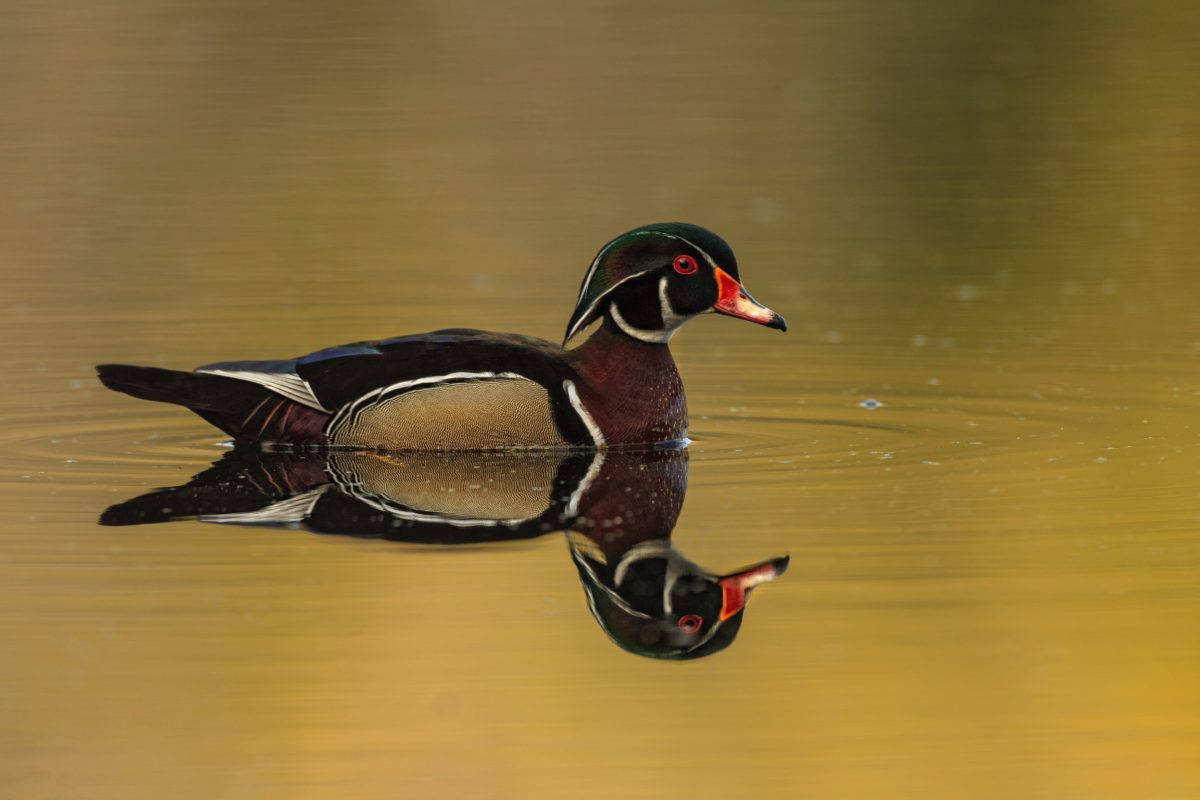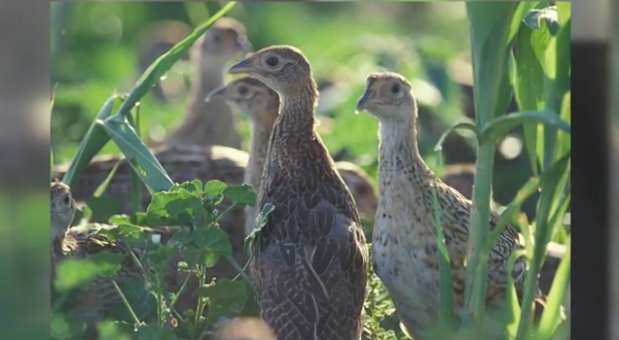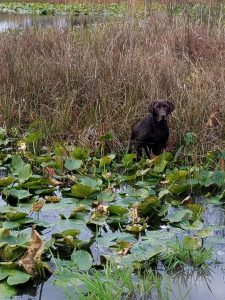
Merlin acts like a puppy again.
Nose to the ground, the 10-year-old chocolate Lab bounds across the grassy field hot on the scent. Approaching a thicket, he flushes a ring-necked pheasant into the bright morning sky.
It’s a sight to behold for Dan Potter.
“I love just watching the birds and watching the dogs doing what they were trained to do,” said Potter, a member of the Michigan Pheasants Forever state council.
Pheasants Forever is a nonprofit conservation organization dedicated to the protection and enhancement of pheasant and other wildlife populations. Its members are a diversified group of wildlife managers, hunters, non-hunters, farmers, ranchers, landowners and conservation enthusiasts. The group seeks to make a difference for wildlife by creating habitat, restoring wetlands and protecting prairies – particularly the prairies that ring-necked pheasants call home.
“The ring-necked pheasant serves as a very colorful barometer of environmental health and is considered an ‘umbrella species’ by many,” said Jared Wiklund, public relations specialist for Pheasants Forever. “That means when diverse habitat is available and pheasants thrive, many other species reap the benefits, including monarch butterflies, honeybees and other pollinators.”

Pheasant numbers on the rise
Pheasants are non-migratory game birds that need a variety of habitats in the course of a year: an open landscape with scattered parcels of grassland for nesting and brood-rearing, cattail marsh or dense prairie grasses for winter cover, and grains for winter food.
But changes in land use have contributed to a decline of pheasant habitat and food sources since the 1950s, when populations were much higher.
That’s why this diverse coalition is working to focus on the restoration of pheasants and habitat in Michigan. The group is halfway through its 10-year Michigan Pheasant Restoration Initiative (MPRI) to enhance Michigan’s pheasant habitat, populations and hunting opportunities on private and public lands.
The coalition consists of a broad range of people from state and federal government (Michigan Department of Natural Resources, Michigan Department of Agriculture and Rural Development, the U.S. Fish and Wildlife Service and the U.S. Department of Agriculture) to conservation groups (Pheasants Forever, Ducks Unlimited, National Wild Turkey Federation and the Quality Deer Management Association) and bird-watching groups (Michigan Audubon).
The initiative is based on restoring habitat in areas that have the potential to support pheasant populations on a large-landscape level.
Professional staffers from local conservation districts and wildlife biologists provide technical assistance and advice to the groups on habitats and habitat improvement. They also assist coalition members in identifying federal, state and private assistance for funding or implementing habitat projects.
The restoration is focused on three regions with the highest potential for exceptional habitat in the southern half of the Lower Peninsula: Gratiot, Saginaw and Clinton counties; Huron, Tuscola and Sanilac counties; and Hillsdale, Lenawee and Monroe counties.
“It’s absolutely crucial that landowners are able to come together and execute good management for grassland habitat,” said Anna Mitterling, Michigan United Conservation Clubs wildlife cooperative coordinator. “The biologists help them succeed by equipping them with technical knowledge and assistance.”
The initiative has already made great strides – and as a result many other wildlife species benefit, too.
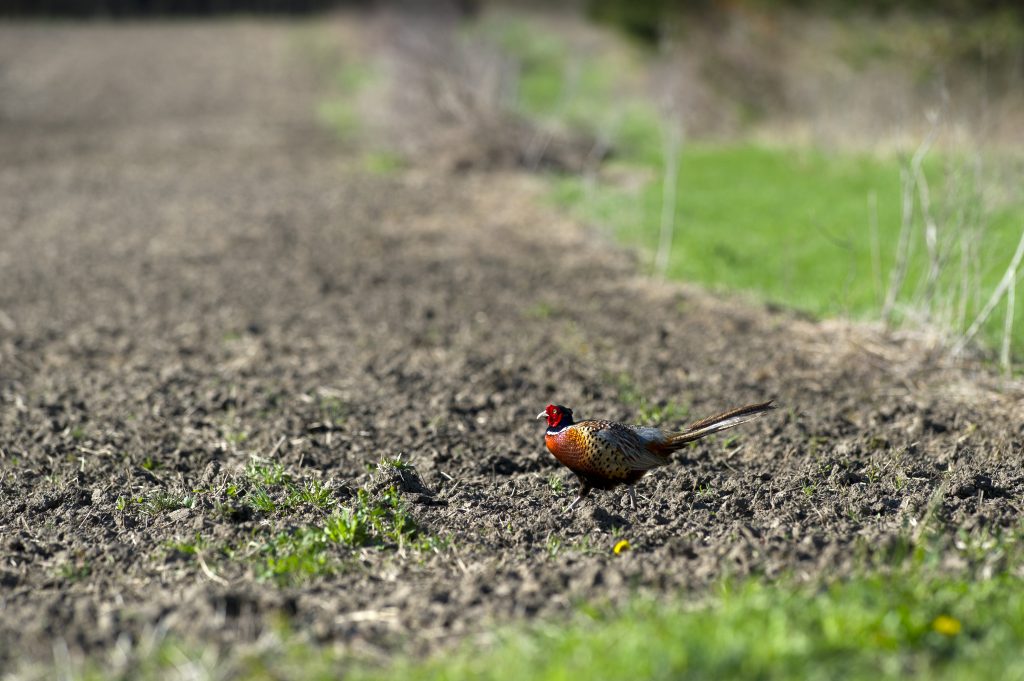
Management helps wildlife, people
Providing for the needs of pheasants also provides for the habitat needs of deer, turkey, rabbit and songbirds, said Matt Pedigo, chair of the Michigan Wildlife Council, which was created in 2013 to build awareness about the importance of wildlife management and conservation – and what is required to ensure that Michigan’s forests, waters and wildlife can be enjoyed for generations to come.
The Michigan Wildlife Council also seeks to ensure that people are aware that these important conservation activities, which take care of Michigan’s abundant natural resources, are not paid for by state taxes but through hunting and fishing licenses and equipment purchases. So even if you don’t hunt and fish, you likely benefit from the activities.
“The fees that hunters are charged and the donations they freely give help society by improving our quality of life through wildlife abundance, supporting pollinators needed for our crops, soil erosion reduction and water quality improvement,” said Bill Vander Zouwen, regional representative of Michigan Pheasants Forever.
Similar to other game species, the ring-necked pheasant is successfully managed through carefully regulated hunting seasons in addition to habitat conservation projects. Along with the DNR, hunter-established volunteer conservation organizations, like Pheasants Forever, have assumed responsibility for managing wildlife and wildlife habitats.
“They are leaders in wildlife and habitat conservation funding and initiatives across the state,” Pedigo said.
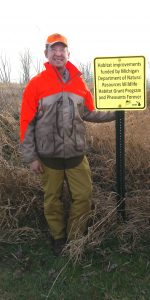
If you build it, they will come
Potter, owner of Marsh ‘N’ Meadow Outdoors in Hastings, west of Lansing, does his part to restore pheasant habitat, too. Potter works with the USDA Conservation Reserve Program (CRP). Signed into law by President Reagan in 1985, CRP is the largest private-lands conservation program in the nation.
In exchange for a yearly rental payment, landowners enrolled in the program agree to remove environmentally sensitive or lower-production land from agricultural production and plant species that will improve environmental health and quality.
“We manage the land to introduce native grasses and wildflowers, which in the long run benefits not only pheasants, but also other species such as deer and pollinating insects,” Potter said.
Every restored field is an opportunity to help the pheasant population, he said.
And it makes for a great morning in the field for him and Merlin.
“Whether you love pheasants for the viewing pleasure or the hunting, this is all important,” Potter said.

